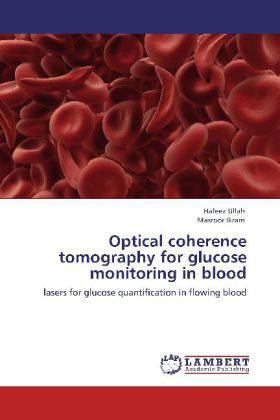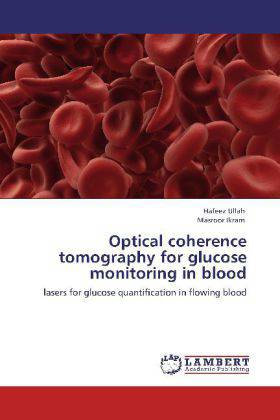
- Afhalen na 1 uur in een winkel met voorraad
- Gratis thuislevering in België vanaf € 30
- Ruim aanbod met 7 miljoen producten
- Afhalen na 1 uur in een winkel met voorraad
- Gratis thuislevering in België vanaf € 30
- Ruim aanbod met 7 miljoen producten
Zoeken
Optical coherence tomography for glucose monitoring in blood
lasers for glucose quantification in flowing blood
Hafeez Ullah, Masroor Ikram
Paperback | Engels
€ 64,45
+ 128 punten
Omschrijving
Optical coherence tomography (OCT) is an emerging biomedical imaging technique with very high spatial resolution. It relies on the coherence properties of lasers, to generate micron-scale cross sectional subsurface images of tissue. Clinically, several uses of this imaging method appear attractive; for example, We have implemented OCT in glucose quantification of blood in vitro and in vivo in research lab. OCT s ability to quantify blood flow dynamics in-vivo also opens up several exciting possibilities to study diseases with significant involvement of microcirculation; for example, we have quantified the measured changes in blood flow (in vitro) during and following higher concentrations and in vivo scenario by envisioning the blood microvasculature with the help of speckle variance optical coherence tomography. Brownian motion of the scatterers is affected due to presence of glucose as measured by OCT. The temporal analysis of Brownian motion statistics yields the translational diffusion coefficient and viscosity of non-flowing and flowing fluids. The increases in glucose concentrations deform red blood cells resulting in rouleaux formations;thus, affecting the OCT signal.
Specificaties
Betrokkenen
- Auteur(s):
- Uitgeverij:
Inhoud
- Aantal bladzijden:
- 140
- Taal:
- Engels
Eigenschappen
- Productcode (EAN):
- 9783848444410
- Verschijningsdatum:
- 22/04/2012
- Uitvoering:
- Paperback
- Afmetingen:
- 155 mm x 220 mm
- Gewicht:
- 230 g

Alleen bij Standaard Boekhandel
+ 128 punten op je klantenkaart van Standaard Boekhandel
Beoordelingen
We publiceren alleen reviews die voldoen aan de voorwaarden voor reviews. Bekijk onze voorwaarden voor reviews.








